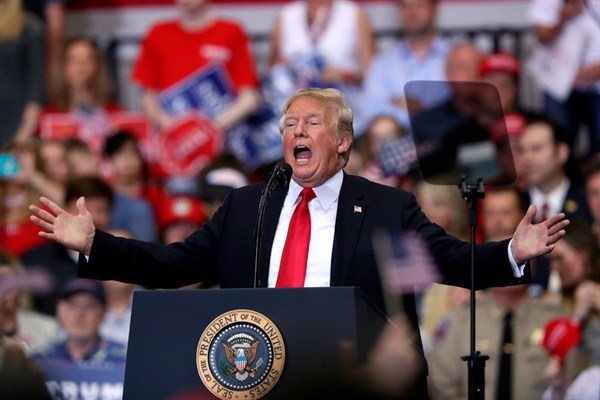There’s little reason to believe that U.S. President Donald Trump will successfully achieve his foreign policy objectives. But as a thought experiment and for the sake of argument, what would America and the world look like if he did?
Trump’s “America First” agenda is predicated on a number of notions, explicit and implicit, regarding how to promote strength at home and abroad. First, the U.S. should maintain balanced accounts, and where possible net surpluses, in its trade relationships. Second, America’s alliances and security partnerships should be as close to cost-neutral as possible. Third, the U.S. should not shrink from leveraging the security guarantees it offers its allies as leverage in the pursuit of trade advantages. And fourth, the U.S. should engage with its international partners on a bilateral basis whenever possible, rather than through multilateral arrangements and commitments.
Trump’s approach has been criticized by a broad range of pundits and observers for running roughshod over 70-plus years of U.S. foreign policy consensus. But heterodoxy in itself is not a valid reason to dismiss an alternate approach, particularly if the consensus practice has not achieved the desired results. Nothing in American foreign policy should be so sacrosanct as to be off-limits to reconsideration.

